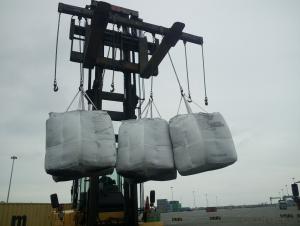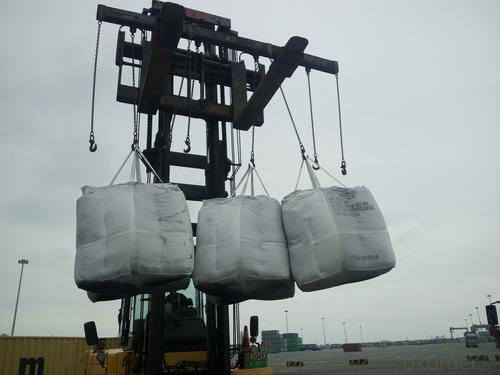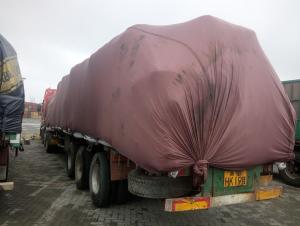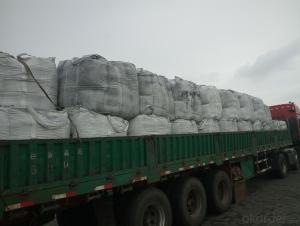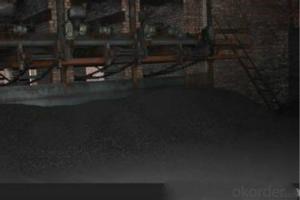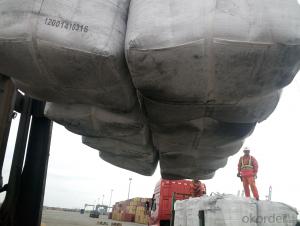Calcined Pitch Coke with VM 0.5 percent max for Steel-making
- Loading Port:
- Tianjin
- Payment Terms:
- TT OR LC
- Min Order Qty:
- 21 m.t.
- Supply Capability:
- 8000 m.t./month
OKorder Service Pledge
OKorder Financial Service
You Might Also Like
Introduction
Pitch Coke/Coal Tar Pitch is a kind of black brittleness and blocky piece, lustrously at normal temperature. It has special odour and poisonous and can be easily flame when melting, second-grade inflammable solid.
Pitch Coke/Coal Tar Pitch is obtained from powerfully processed coal tar. Compared to petroleum asphalt, the adhesiveness is better. Coal Tar Pitch is high quality tar production with high fixed carbon. It has excellent adhesion, waterproofing and resistance against seawater, oil and various chemicals. In these properties, it is much better than petroleum asphalt tar.
It can be used to produce painting, electrode, pitch coke, and tar felt. It also can be used as fuel and the raw material of asphalt carbon black.
Features:
The morphology, chemistry and crystallinity of recarburisers have a major impact on the overall casting cost. The combined application and cost benefits, which are derived through the use of Desulco, enable foundries to manufacture castings in a highly cost effective manner.
reduces
Recarburiser consumption
Power consumption
Inoculant consumption
MgFeSi consumption
Furnace refractory wear
Scrap rate
Tap to tap time
Slag inclusions risk
Chill
increases
Casting microstructure
Productivity
Process consistency
Carbon Recovery
Compared with calcined petroleum coke, acetylene coke and
graphite electrode scrap, Desulco yields the highest carbon
recovery and fastest dissolution time
Specifications:
CPC | |||
F.C.% | 98.5MIN | 98.5MIN | 98MIN |
ASH % | 0.8MAX | 0.8MAX | 1MAX |
V.M.% | 0.7 MAX | 0.7 MAX | 1 MAX |
SULFUR % | 0. 5MAX | 0. 7MAX | 1MAX |
MOISTURE % | 0.5MAX | 0.5MAX | 1MAX |
Pictures:

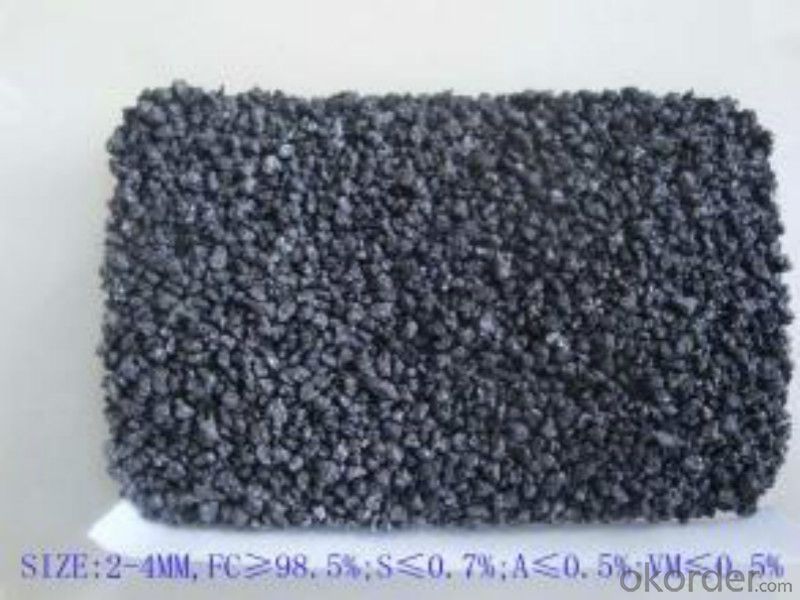

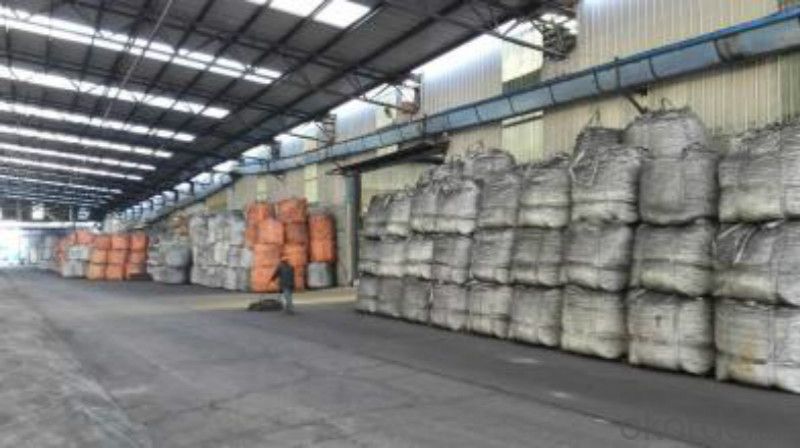
FAQ:
1.MOQ:2 Containers |
2.Size:1-3mm,1-5mm,2-6mm,3-5mm and as the customer's requirement |
3.Packing: 1 ton jumbo bag or 25kgs paper in bag |
4.Payment:T/T or L/C at sight |
5.Delivery time: within 15 days after receiving the deposit |
6.Usage: it is as carbon raiser,widely used in steelmaking,casting,casting iron,steel foundry,aluminum metallury. |
- Q: What is carbon neutral?
- Carbon neutral refers to achieving a state where the net carbon emissions released into the atmosphere are balanced out by an equivalent amount of carbon removal or offsetting. This is typically achieved by reducing greenhouse gas emissions and investing in projects that remove carbon dioxide from the atmosphere, resulting in no net increase of carbon dioxide levels.
- Q: How is carbon used in the production of pharmaceuticals?
- Pharmaceutical production relies on carbon for various purposes. One key application is in the synthesis of organic compounds, which serve as the foundation for numerous medications. Carbon atoms act as the building blocks for these compounds, enabling the formation of intricate structures found in pharmaceutical molecules. Additionally, carbon finds use in the creation of active pharmaceutical ingredients (APIs). APIs are the components responsible for delivering the desired therapeutic effects of drugs. Carbon is frequently incorporated into the structure of APIs to enhance their stability, bioavailability, and effectiveness. By modifying carbon-based molecules, their properties can be fine-tuned, optimizing their ability to target specific diseases or conditions. Furthermore, carbon plays a role in the purification and separation processes employed during pharmaceutical production. Activated carbon and other carbon-based adsorbents are commonly utilized to eliminate impurities and contaminants from drug formulations. These adsorbents possess a large surface area and effectively bind to and remove unwanted substances, ensuring the purity and safety of pharmaceutical products. Moreover, carbon contributes to the development of drug delivery systems. Carbon nanomaterials, including carbon nanotubes and graphene, exhibit unique properties that make them suitable for drug delivery applications. These nanomaterials can encapsulate drugs, enabling controlled release and precise targeting of specific tissues or cells. Additionally, they improve the solubility and stability of drugs, thereby enhancing their therapeutic potential. In conclusion, carbon is indispensable to the pharmaceutical industry. Its involvement spans the synthesis of organic compounds, the creation of active pharmaceutical ingredients, the purification of drugs, and the development of drug delivery systems. The versatility and ability of carbon to form complex structures establish it as an essential element in pharmaceutical production.
- Q: What are the impacts of carbon emissions on marine life?
- Carbon emissions, particularly in the form of carbon dioxide (CO2) released from burning fossil fuels, have significant impacts on marine life. One of the primary effects is ocean acidification, which occurs when excess CO2 is absorbed by seawater, leading to a decrease in pH levels. This acidification can have detrimental effects on marine organisms, especially those with calcium carbonate shells or skeletons, such as corals, mollusks, and some plankton. As the pH levels decrease, it becomes harder for these organisms to build and maintain their shells. This can result in reduced growth rates, weakened shells, and increased vulnerability to predation and disease. Additionally, the dissolution of calcium carbonate shells due to ocean acidification can disrupt the entire food chain, as many organisms rely on these shells for protection or as a food source. Furthermore, carbon emissions contribute to global warming, leading to rising sea temperatures. Warmer waters can cause coral bleaching, a phenomenon where corals expel the colorful algae living within their tissues, resulting in the loss of their main food source and leading to their eventual death. Coral reefs are vital ecosystems that support a diverse array of marine life, and their decline has far-reaching consequences on biodiversity and coastal communities that rely on them for tourism and fisheries. The impacts of carbon emissions on marine life extend beyond individual species and ecosystems. Climate change, driven by carbon emissions, can disrupt ocean currents, alter weather patterns, and cause changes in nutrient availability. These changes can affect the distribution and abundance of marine organisms, leading to shifts in species composition and potential loss of biodiversity. It is worth noting that the impacts of carbon emissions on marine life are interconnected with other stressors such as overfishing, pollution, and habitat destruction. These combined pressures exacerbate the vulnerability of marine ecosystems and increase the risks of irreversible damage. To mitigate the impacts of carbon emissions on marine life, reducing greenhouse gas emissions is crucial. Transitioning to cleaner and renewable energy sources, improving energy efficiency, and adopting sustainable practices can help slow down the rate of ocean acidification and global warming. Additionally, protecting and restoring marine habitats, implementing sustainable fishing practices, and reducing pollution can enhance the resilience of marine ecosystems and promote the recovery of marine life.
- Q: What is carbon black dye?
- Carbon black dye is a type of dye that is derived from carbon black, which is a fine black powder made from the incomplete combustion of hydrocarbon materials. It is commonly used as a pigment and dye in various industries, including the manufacturing of ink, paint, rubber, plastics, and textiles. Carbon black dye is highly valued for its intense black color and excellent lightfastness, meaning it does not fade easily when exposed to sunlight or other sources of light. Due to its strong coloring properties, carbon black dye is also used to add depth and darkness to other colors, making them more vibrant and visually appealing. Additionally, carbon black dye is known for its good heat stability, chemical resistance, and electrical conductivity, making it suitable for a wide range of applications.
- Q: How do humans contribute to carbon emissions?
- There are several ways in which humans contribute to carbon emissions. One significant source of carbon emissions arises from the burning of fossil fuels for electricity, transportation, and heating purposes. This involves the combustion of coal, oil, and natural gas, resulting in the release of carbon dioxide (CO2) into the atmosphere. The use of these fossil fuels is widespread in our everyday lives, from powering our homes and vehicles to manufacturing goods and producing food. Furthermore, deforestation, which is primarily caused by human activities such as agriculture, logging, and urbanization, also adds to carbon emissions. Trees absorb CO2 and release oxygen, so when they are cut down, the stored carbon is released back into the atmosphere. Additionally, industrial processes like cement production and chemical manufacturing also emit significant quantities of CO2. Lastly, the livestock industry, particularly the production of beef and dairy products, contributes to carbon emissions through the release of methane from livestock and the deforestation required to expand grazing areas and cultivate animal feed. In conclusion, human activities directly and indirectly contribute to carbon emissions, underscoring the necessity for collective efforts to mitigate and reduce our environmental impact.
- Q: What are the different types of carbon-based food additives?
- There are several different types of carbon-based food additives that are commonly used in the food industry. These additives serve various purposes, including enhancing flavor, improving texture, and extending the shelf life of food products. Here are a few examples: 1. Activated Carbon: This type of carbon-based additive is commonly used as a food coloring agent. It is a porous form of carbon that is processed to have high adsorption properties. Activated carbon is often used to give black color to certain food and beverages, such as black food coloring or black lemonade. 2. Carbon Black: Also known as vegetable carbon or vegetable black, this additive is derived from charcoal and is commonly used as a natural food coloring agent. It is often used to give a dark black or grey color to foods like black licorice, ice cream, and bakery products. 3. Carbon Dioxide: While not directly added as an additive, carbon dioxide gas is used in food processing and packaging to extend the shelf life of certain products. It is commonly used in carbonated beverages to create the characteristic fizz and also in modified atmosphere packaging to preserve the freshness of certain foods. 4. Carbonated Water: This is carbon dioxide gas dissolved in water, creating carbonic acid. Carbonated water is often used as a base for soft drinks and beverages, providing effervescence and a refreshing taste. 5. Carbonates: Carbonates, such as calcium carbonate and sodium carbonate, are used as acidity regulators in food products. They help maintain the pH balance and control the acidity of certain foods, such as canned vegetables, fruit preserves, and pickles. 6. Carbon-based Preservatives: Some carbon-based additives, such as sorbic acid and propionic acid, are used as preservatives to inhibit the growth of molds, bacteria, and yeasts in food products. These additives help to extend the shelf life of products like bread, cheese, and processed meats. It is important to note that while carbon-based food additives are generally considered safe for consumption, it is always advisable to read food labels and consult with professionals, such as dietitians or healthcare providers, if you have any concerns or specific dietary restrictions.
- Q: How do human activities contribute to carbon emissions?
- Human activities contribute to carbon emissions in several ways. The burning of fossil fuels for electricity, transportation, and industry is one of the main sources of carbon dioxide emissions. When we burn coal, oil, or natural gas, carbon is released into the atmosphere. Additionally, deforestation and land-use changes also contribute to carbon emissions. Trees play a crucial role in absorbing carbon dioxide, so when forests are cleared for agriculture or urbanization, the stored carbon is released back into the atmosphere. Moreover, industrial processes such as cement production and chemical manufacturing also release carbon emissions. Finally, human activities like agriculture and livestock farming can produce methane, a potent greenhouse gas that contributes to global warming. Overall, our reliance on fossil fuels, deforestation, industrial processes, and certain agricultural practices all contribute to carbon emissions, exacerbating the problem of climate change.
- Q: How dnf advanced carbon ashes?
- That thing is called the advanced furnace rock carbon... Not ash carbon...... It was bought at the mall (sold before, no now), with a success rate plus ten percent.
- Q: What are the effects of carbon emissions on animal populations?
- Carbon emissions have profound effects on animal populations. One of the main consequences is the disruption of ecosystems and the loss of habitats. As carbon dioxide levels rise in the atmosphere, the Earth's temperature increases, leading to climate change. This change in climate can alter the availability of resources such as food and water, making it more difficult for animals to survive and reproduce. Additionally, carbon emissions contribute to ocean acidification. When carbon dioxide is absorbed by seawater, it reacts with water to form carbonic acid, which lowers the pH of the ocean. This acidification has detrimental effects on marine life, especially on species that rely on calcium carbonate to build their shells or skeletons, such as corals and shellfish. As their habitats become more corrosive, these animals struggle to survive and reproduce, leading to significant declines in their populations. Furthermore, carbon emissions are often associated with air pollution, which has direct and indirect impacts on animal populations. High levels of air pollution, specifically from pollutants like nitrogen dioxide and particulate matter, can cause respiratory problems and other health issues in animals. This can lead to reduced fitness and increased mortality rates, ultimately affecting the overall population size. Lastly, carbon emissions contribute to deforestation and habitat destruction. As more land is cleared for human activities like agriculture or urbanization, animal populations lose their natural habitats and are forced to adapt to fragmented landscapes. This fragmentation restricts their movement, limits access to resources, and increases their vulnerability to predation and other threats. In conclusion, carbon emissions have far-reaching effects on animal populations, including habitat loss, climate change, ocean acidification, air pollution, and deforestation. These impacts disrupt ecosystems and threaten the survival of many animal species. It is crucial to address carbon emissions and reduce our carbon footprint to mitigate these detrimental effects and protect the diversity of life on Earth.
- Q: The relative molecular mass was between 120-150. The testThe organic matter M, which contains only carbon, hydrogen and oxygen, was measured by mass spectrometer. The relative molecular mass was between 120-150. The mass fraction of oxygen element measured by experiment is 48.48%, the ratio of hydrocarbon to mass is 15:2, and only COOH in M molecule is measured by infrared spectrometer. Then the M formula is?
- The mass fraction of oxygen element is 48.48%, the mass fraction of hydrocarbon is =51.52%, and the mass ratio is 15:2. The mass fraction of carbon is =51.52%x15/ (15+2) =45.46%, and the mass fraction of hydrogen is =51.52%x2/ (15+2) =6.06%The atomic number of C, H and O is higher than that of =45.46%/12:6.06%/1:48.48%/16=3.79:6.06:3.03Molecules contain only COOH, and oxygen atoms must be even numbers.Therefore, the number of atoms in C, H and O can be reduced to =5:8:4, which may be C5H8O4, and the relative molecular weight is 132
Send your message to us
Calcined Pitch Coke with VM 0.5 percent max for Steel-making
- Loading Port:
- Tianjin
- Payment Terms:
- TT OR LC
- Min Order Qty:
- 21 m.t.
- Supply Capability:
- 8000 m.t./month
OKorder Service Pledge
OKorder Financial Service
Similar products
Hot products
Hot Searches
